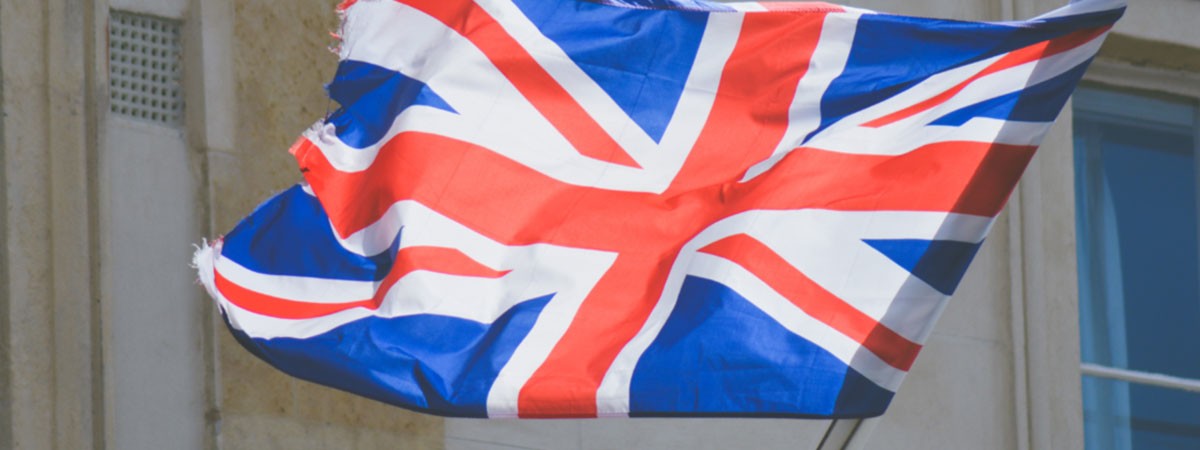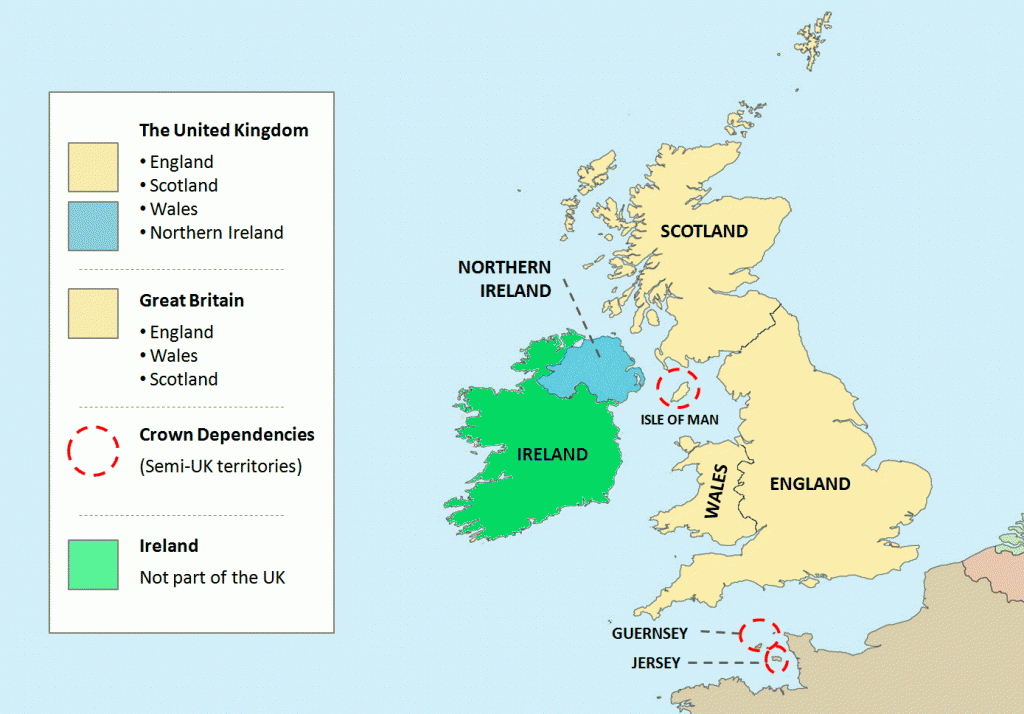Firstly, don’t confuse England, Britain and the United Kingdom. This confusion upsets a lot of people with red hair and personable accents.
The United Kingdom, Britain and Ireland
1. England is pretty easy to explain. It’s one of the most famous countries in the world. England is the heart of Great Britain. But Great Britain is much more.
2. Great Britain is the mainland island that includes England, Scotland and Wales. But it doesn’t include northern Ireland nor other surrounding islands (which it governs).
3. The United Kingdom is short for the ‘United Kingdom of Great Britain and Northern Ireland’. As its name suggests, this is Britain plus Northern Ireland. But it also includes most of the nearby islands such as the Shetland and Channel islands. In its entirety, the United Kingdom is recognised internationally as a sovereign State (see the difference between countries and States). England, Wales, Scotland and Northern Ireland all fly the same flag (the Union Jack) and use British passports. London, England is the capital of Britain and the United Kingdom.
Ireland is in close proximity to the United Kingdom. However it’s not part of the United Kingdom now. But it used to be.
Ireland was part of the British Empire in 1801 (much to Ireland’s dislike). In 1921, Ireland became a sovereign State. The Parliamentarians in the northern section of Ireland (which was was largely religiously Protestant) didn’t support a Parliament in Dublin. This disunity couldn’t be resolved, so the northern tip of Ireland remained part of the United Kingdom. Fifty years later in 1973, the Northern Ireland referendum resulted in 98.9% of the population voting to stay as part of the United Kingdom. Ireland is part of the European Union and uses the Euro as currency.
The Irish get upset when mistaken for part of Britain and the United Kingdom. So get it right. Having said that, its northern tip (Northern Ireland) has a polarising bloody history and is part of the United Kingdom.
There is a collective noun; ‘British Isles’, coined to refer to the United Kingdom and Ireland – but Ireland rejects this usage as it likes to separate itself from the associations and ownership connotations of Britain. I don’t really like it either as I immediately think it refers to British Overseas Territories (which I will explain shortly).
4. Crown Dependencies are three islands just off the cost of Britain. These are;
- the Isle of Man
- Jersey
- Guernsey
These island regions are not part of the United Kingdom nor British Overseas Territories. Instead, they are labelled as ‘Crown dependencies’. These special regions aren’t countries or sovereign States, but have the power to govern themselves.
The three islands are separately self governing regions that have their United Kingdom looking at them closely – kind of like a protective older brother who is careful not to cramp their style. The United Kingdom is responsible for the defence and International representation of these regions, however each Crown Dependency manages its own immigration. The Island of Man and Guernsey have their own currencies (a parity version of the English Pound). Jersey uses the English Pound.
Phew! OK, so that’s the immediate United Kingdom-ish area. But it doesn’t end there. Like all successful world super powers, Great Britain sailed around and colonised many different countries. While Britain’s empire has been greatly reduced over the last century, it still oversees overseas regions… did you like that homophone?
5. British Overseas Territories are areas that are governed by Britain, but are located a significant physical distance away. These regions are typically small islands. The 250,000 people living in these territories have British passports. The territories in order of land size are:
- Falkland Islands (South Atlantic Ocean) – 12,173 km²
- South Georgia and the South Sandwich Islands (South Atlantic Ocean) – 4,066 km²
- Turks and Caicos Islands (Caribbean) – 430 km²
- Saint Helena, Ascension and Tristan da Cunha (South Atlantic Ocean) – 420 km²
- Cayman Islands (Caribbean) – 264 km²
- Akrotiri and Dhekelia (Cyprus) – 255 km²
- British Virgin Islands (Caribbean) – 153 km²
- Montserrat (Caribbean) – 101 km²
- Anguilla (Caribbean) – 91 km²
- Bermuda (North Atlantic Ocean) – 54 km²
- British Indian Ocean Territory (Indian Ocean) – 46 km²
- Pitcairn Islands (Pacific Ocean) – 43 km²
- Gibraltar (Europe) – 6.5 km²
6. Antarctica… kind of: Britain also has claims on Antarctica, like many other countries. But no-one recognises ownership of Antarctica so that’s a bit of a moot point.
Want a video explanation? I love the videos CGP grey does. I love it because he uses good visuals and talks fast and to the point – pretty rare in the world of YouTube.


